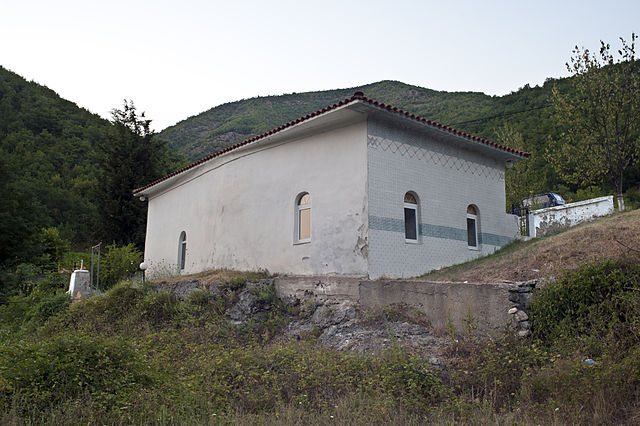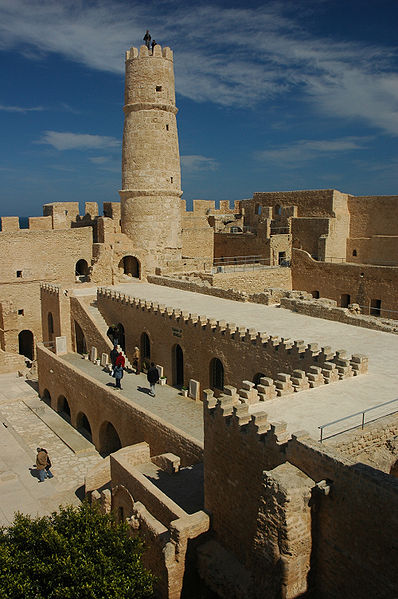A khanqah or khangah, also known as a ribat (رباط), is a building designed specifically for gatherings of a Sufi brotherhood or tariqa and is a place for spiritual practice and religious education. The khanqah is typically a large structure with a central hall and smaller rooms on either side. Traditionally, the kahnqah was state-sponsored housing for Sufis. Their primary function is to provide them with a space to practice social lives of asceticism. Buildings intended for public services, such as hospitals, kitchens, and lodging, are often attached to them. Khanqahs were funded by Ayyubid sultans in Syria, Zangid sultans in Egypt, and Delhi sultans in India in return for Sufi support of their regimes.
The Budala Hodja Tekke in Greece.
Haruniyeh tomb, named after Harun al-Rashid. The present structure, a khanqah, is located in Tus, Iran and was probably built in the 13th century. Al-Ghazali is buried here.
Tohidkhaneh, a medieval khanqah in Isfahan, Iran.
Shrine of Islamic Naqshbandi saints of Allo Mahar Sharif
A ribāṭ is an Arabic term, initially designating a small fortification built along a frontier during the first years of the Muslim conquest of the Maghreb to house military volunteers, called murabitun, and shortly after they also appeared along the Byzantine frontier, where they attracted converts from Greater Khorasan, an area that would become known as al-ʻAwāṣim in the ninth century CE.
Ribat of Monastir, Tunisia
Ribat of Sharaf, Iran






